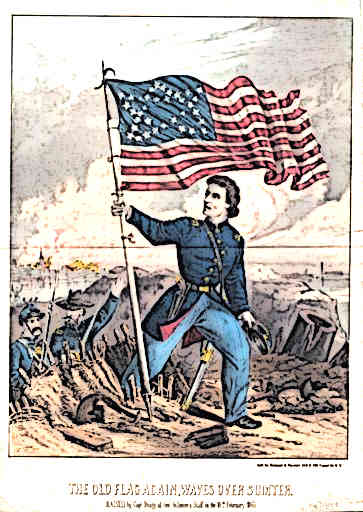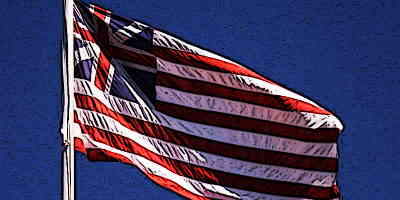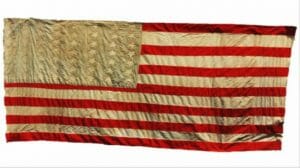American Flag History
Introduction
The American Flag is perhaps the world’s most famous flag. With its red and white stripes, it is easily recognizable in nearly all corners of the world today.
It survived battles, inspired countless patriotic songs and evolved in response to the country’s natural growth. It was later nicknamed ‘Old Glory’.
The term originally referred to a U.S. Flag owned by William Driver, given to him by his mother in celebration of his appointment.
Driver was a master mariner from Massachusetts who assumed command of his own ship, the Charles Doggett in 1824.

Driver flew the flag with him during his time at sea and then later brought it to Nashville, Tennessee, after he retired.
The flag survived multiple attempts at defacement during the Civil War, and Driver was eventually able to fly it over the Tennessee Statehouse once the war ended.

It is currently a primary artifact at the National Museum of American History and was last displayed in Tennessee by special permission of the Smithsonian at an exhibition in 2006.

Origins of the Flag
On January 1st, 1776, while the Continental Army was laying siege to Boston (which had been taken over by the British), George Washington ordered that the Grand Union flag be hoisted above his base at Prospect Hill.
It was officially adopted by Congress on June 14th, 1777. While the exact origins of the American Flag remain unknown, some historians believe it was designed by Congressman Francis Hopkinson.

Inspiration Behind the Design
The American flag today contains 13 horizontal stripes (seven red stripes that alternate with six white stripes).

The stripes are representative of the original 13 Colonies, while the stars represent the total 50 states of the Union.

The colors of the flag have their own symbolism: the color red represents hardiness and valor, while white symbolizes purity and the color blue represents vigilance, perseverance and justice.
Laws Introduced for Changing the Design
Between the years 1777 and 1960, Congress passed several acts that changed the American flag’s shape, design and arrangement. These acts also allowed stars to be added to the flag, to represent the admission of each new state.
Notable among these was the Act of April 4, 1818. This particular act introduced 13 stripes (replacing the previous number of 15 stripes) and one star for each state.

These were added on July 4th of the same year, following the admission of each new state and signed by President Monroe.

Executive order of President Eisenhower, January 3, 1959 – This particular executive order, given by the then-President of the United States of America, ordered that the stars be arranged into seven rows, with each row containing seven stars; staggered horizontally and vertically.

Change in the Arrangement of Stars
Executive order of President Eisenhower – On August 21, 1959, President Eisenhower issued an executive order.
This particular executive order replaced the previous one and changed the arrangement of the stars on the American flag, by ordering nine rows of stars to be arranged horizontally and eleven rows to be arranged vertically.
- American Flag
- American Flag History
- Betsy Ross
- Bonnie Blue Flag
- Confederate Flag
- Culpeper Flag
- Dixie Flag
- Fort Moultrie Flag
- Gadsden Flag
- Grand Union Flag
- List of American Battle Flags
- Star Spangled Banner
- Top 10 American Flags List
- Top Ten Facts – American Flag
- US Flag Code
- Whiskey Rebellion Flag
- Why the American Flag has 13 Stripes and 50 Stars